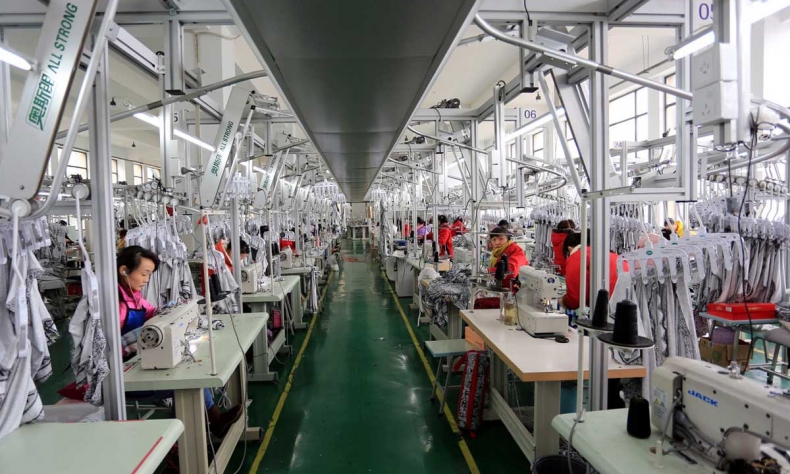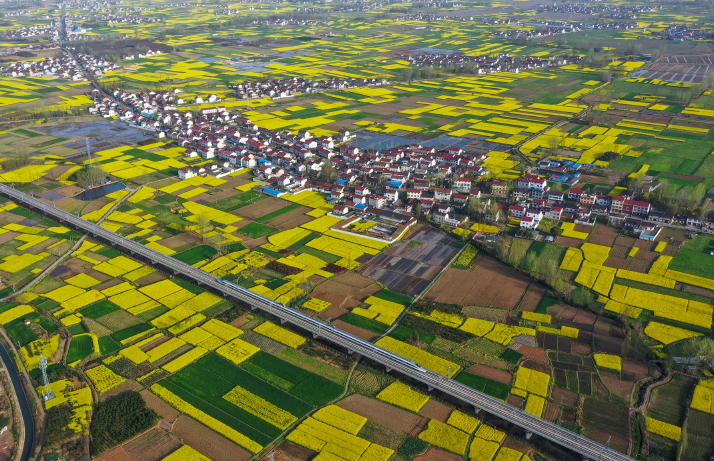
An Upward Trajectory
Key transitions fuel China’s economic takeoff
Since the founding of the People’s Republic of China (PRC), especially since reform and opening up began in the late 1970s, China has gone from an underdeveloped agricultural country to the second largest economy in the world. Whereas the Chinese economy accounted for only 5.2 percent of the world economy in 1952, the figure grew to 15 percent in 2018. Thus, it is relevant to review the path China has traveled at a time when it is celebrating 70 years of development and eyeing greater progress.
In retrospect, China’s transformation is most notable in the following eight aspects:
Transition from a backward agricultural country to a modern industrialized nation. In 1949, China’s industrial and agricultural output was only a small fraction of what it is today. In particular, heavy industry accounted for only 4.5 percent of China’s industrial and agricultural output. In order to accelerate the transformation from an agricultural to an advanced industrial country, China started to promote industrialization during the planned economy era. In 70 years of development, China has established a complete modern industrial system and become a major manufacturer.
Transition from a planned economy to a market economy. China established socialist public ownership as its basic economic system at the beginning of the PRC. It adopted a planned economic system after the Third Plenary Session of the Seventh Central Committee of the Communist Party of China (CPC) in 1950. At the end of 1978, the Third Plenary Session of the 11th CPC Central Committee kickstarted China’s economic system reform, which unleashed market forces. The Third Plenary Session of the 18th CPC Central Committee in 2013 pointed out that economic reform should focus on dealing with the relationship between the government and the market, enabling the market to play a decisive role in resource allocation while giving better play to the government’s role.
Transition from an extensive growth model to an intensive one. Before reform and opening up, China adopted an extensive growth model featuring the expansion of quantity and scale, and high resource consumption. Spending was low while saving was high. Heavy industry was prioritized and there was more focus on speed than efficiency. Since reform and opening up began, China has placed more emphasis on science, technology and education and begun to shift to a more intensive growth model. The efficiency of production factors has improved, along with the contribution of science, technology and human resources to economic growth.
Transition from a monolithic economic structure to a diversified one. China’s industrial structure before reform and opening up was undiversified given its public ownership, planned economy and overemphasis on the development of heavy industries. Since the advent of reforms, China’s economic structure has become more diversified, with various forms of ownership coexisting and public ownership playing a dominant role.

Transition from human-nature contradictions to the harmonious coexistence of the two. After the PRC was founded, industrialization and massive construction resulted in the emergence of environmental problems. Since industrialization was nascent in this period, environmental problems existed only in a few locations and were not severe, so the government didn’t highlight the concept of environmental protection or formulate relevant policies. However, as China’s economic growth gained momentum, it put mounting pressure on the environment and resources and tensions between humans and nature intensified. The government has since attached great importance to environmental problems. At the Fifth Plenary Session of the 18th CPC Central Committee in 2015, a new development concept calling for innovative, coordinated, green, open and inclusive development and the goal of building a beautiful China were put forward as part of China’s efforts to ensure harmony between nature and humans.
Transition from prioritizing the country’s economic strength to prioritizing residents’ incomes. Before reform and opening up and in the first few years following the adoption of the policy, China put GDP growth at the top of its economic development agenda in order to enrich the country first. As progress was made, it started to give greater emphasis to increasing residents’ incomes in order to boost consumption and meet their growing demands while still improving the wealth of the whole country.
Transition from the strategy of catching up with others to the pursuit of quality and efficiency in economic growth. After the founding of the PRC, and even for a long time after reform and opening up began, China pursued quantitative growth with the purpose of catching up with advanced economies. However, this economic model, which focused on the speed of growth, was not sustainable. It needs to transition from high-speed to high-quality growth.
Transition from closed to open development. In its early days, the PRC did not have diplomatic relations with most Western countries. Western powers led by the United States were hostile to the newly founded state. Given the domestic and international situations at the time, China could only adopt an inward-oriented development strategy. After it adopted the reform and opening-up policy, China established special economic zones and opened up its coast, areas along the Yangtze River and border regions step by step. It joined the World Trade Organization in 2001. From importing foreign products and technologies at the beginning of reform and opening up to exporting their products and establishing branches overseas, Chinese enterprises have seen their abilities to use domestic and overseas resources and markets greatly improved. The Chinese economy has been gradually integrated into the world economy. Chinese enterprises’ competitiveness has improved, making China an important engine of global growth. China will continue to promote trade and investment liberalization, and make economic globalization more open, inclusive and balanced so that its benefits are shared by all.
The author is a professor of economics and dean of the Graduate School of Northwest University in Xi’an, Shaanxi Province
 Facebook
Facebook
 Twitter
Twitter
 Linkedin
Linkedin
 Google +
Google +










